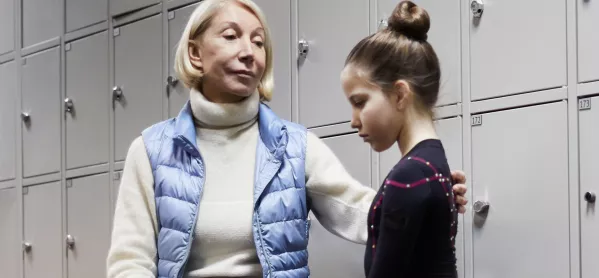I often find myself wondering why something as common as anxiety is so frustratingly confusing.
We’ve all experienced the feeling, yet it’s incredibly personal to each individual.
Working with young people who are anxious can be exhausting, which is why it’s so important to try and help them gain clarity among the confusion.
Quick read: 5 simple steps to handle teacher anxiety
Quick listen: The truth about mental health in schools
Want to know more? Want to achieve success? Know that failure is your friend
From an evolutionary perspective, anxiety is one of the reasons the human race has survived. It has kept us alert to potential threats and dangers and keeps us ready to fight or take flight as needed. Put simply, it’s survival.
Once the threat dissipates, our anxiety is supposed to go the same way. But for some people, there’s no dissipating. They feel this way pretty much all of the time.
If you’re supporting young people whose feelings of anxiety are becoming problematic, these tips may help.
Climb the ladder
If a student tells you something that they would like to be able to do but can’t because they feel too anxious, you can use a ladder activity to help them reach this goal. The top rung of the ladder is the thing they wish they could do. Work backwards and add in steps to help them reach the top.
Explain that it’s unrealistic to expect someone to be able to get to the top of a ladder without stepping up towards it first.
Take, for example, a student who feels unable to go to assembly. The first “rung” may be as basic as talking about what an assembly is and what happens in an assembly.
Next could be looking at pictures and videos of an assembly. You may then progress to standing outside the assembly to then finally being able to sit in an assembly when the young person feels ready.
Avoid avoidance
Avoidance feeds anxiety, so it’s important to support a young person in recognising when they are avoiding something and gently empower them to face their fear.
A trusting, honest relationship with the young person is key here as overcoming avoidance needs a collaborative approach with the young person.
Understand its uses
Educate the young person in understanding what anxiety is and the evolutionary advantages it brings.
Sometimes having a scientific understanding of how our bodies respond to threat can normalise the experience and make it much less scary.
Create circles of control
Draw a large circle and then a smaller circle inside it. Discuss with the young person what is in their control (inner circle) and what isn’t (outer circle).
Encourage the young person to let go of things that are not in their control and instead focus on what they can. This can be empowering.
Lowri Scourfield is a Sendco


